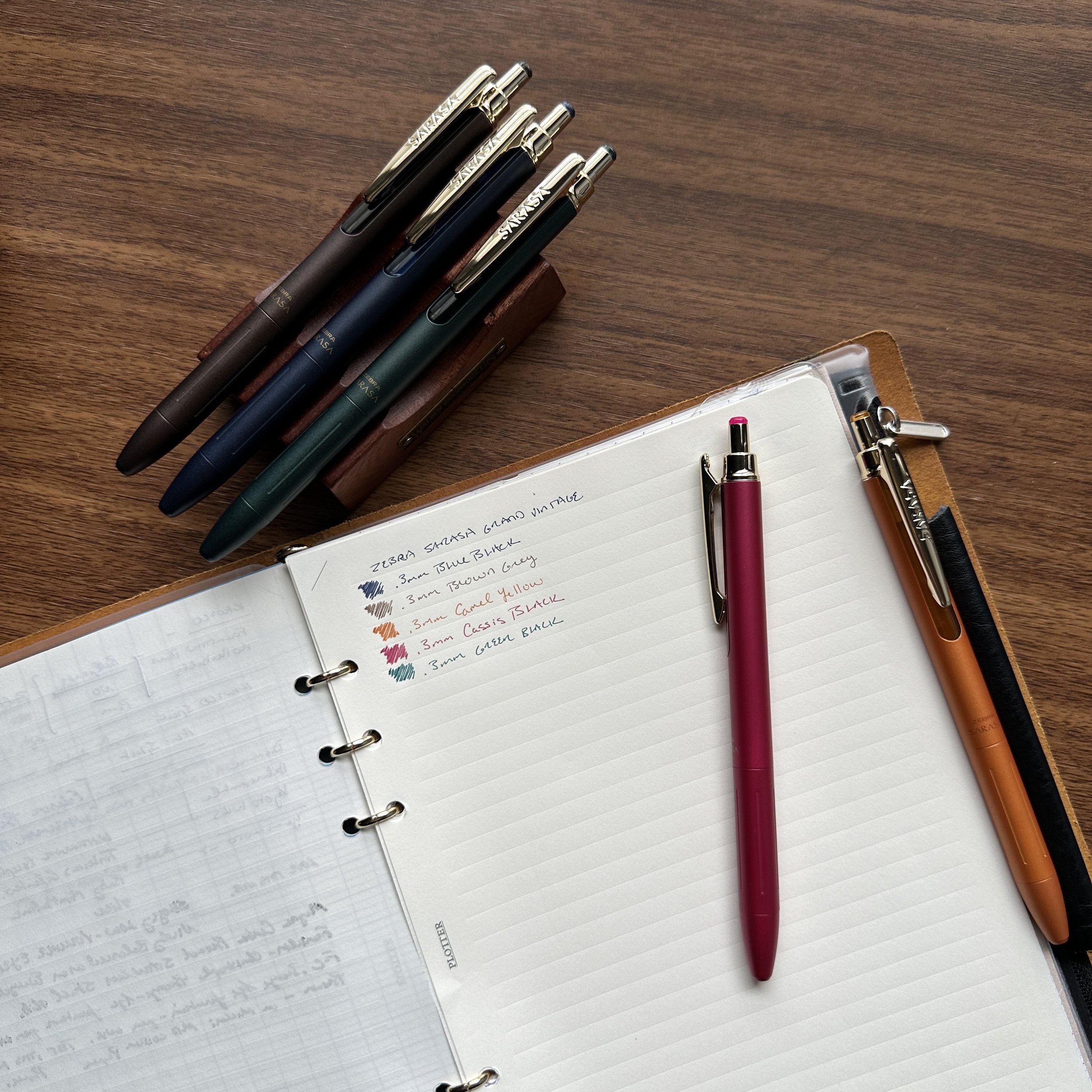Anterique’s low-viscosity ballpoint pens are one of my favorite go-anywhere options for those situations where I need a durable everyday writer, and now they’ve released a pocket-sized version of their Standard and Brass Edition pens! The Anterique “Mini” will fit just about anywhere, and is perfect for clipping to your pocket notebook, Plotter Mini-5, or Traveler’s Passport-sized Notebook for writing on the go.
My clear red mini with one of my takeaway rarities from last week’s D.C. Pen Show!
Currently, the “Brass Edition” Mini is available in five different “clear” colors (crystal, yellow, blue, red, and green), and the standard Mini in nine colors. Note that these parts are all interchangeable with the components of all other Anterique Pens: for example, if you’d like to make a “Danube Blue” brass pen, you can combine the upper part of a standard “Danube Blue” ballpoint with the brass barrel of the mini or standard-sized brass edition pen. The mini pens do take a shorter refill than the standard Anterique “Mach Ball”, though it uses the same low-viscosity ballpoint ink and .5mm tip.
Comparison photo of the four different styles of Anterique pens, from left: Standard ballpoint, mini ballpoint, Mini Brass Edition Ballpoint, and full-sized Brass Edition Ballpoint.
In addition to the new mini-sized Anterique pens, we have new colors of the standard-sized pens, as well as new full-size brass options! Be sure to check these out as Anterique is constantly adding new variations to their existing product line.
The Gentleman Stationer is supported by purchases from the T.G.S. Curated Shop and pledges via the T.G.S. Patreon Program. Many thanks for all your support!
